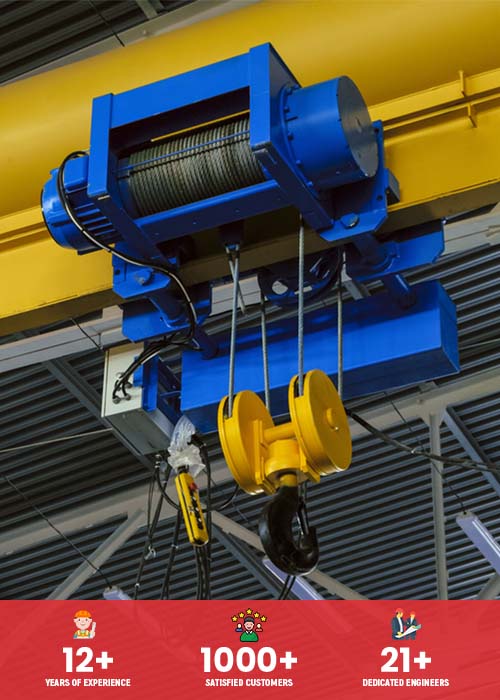Safety Features in Electric Wire Rope Hoist Usage
Wire rope hoists are vital pieces of machinery made by electric wire rope hoist manufacturers and are used in a wide range of industries, such as construction, manufacturing, warehousing, and logistics, for the lifting and moving of large objects. Nonetheless, to operate them efficiently, one must have a complete awareness of the security protocols in place to prevent accidents and ensure the safety of operators. We’ll cover the fundamentals of wire rope hoist safety features in this article, equipping you with the knowledge to use them expertly and enhance safety protocols.
What are Wire Rope Hoists?
Wire rope hoists consist of the wire rope drum, hook, control system, gearbox, and hoist motor apart from other components. They are able to move and lift heavy loads in both horizontal and vertical directions. By using an electric motor to drive the wire rope, the hoisting mechanism enables controlled weight lifting and lowering. Wire rope hoists come in a variety of configurations, including motorised and manual models. They all have comparable safety elements that are necessary for operational safety, regardless of kind.
Key Safety Features of Wire Rope Hoists
- To prevent overload
An overloaded wire rope hoist can cause mishaps and equipment failure, among other terrible outcomes. To prevent overloading, load limiters or overload prevention devices are installed on modern wire rope hoists. These devices monitor the load being hoisted and automatically stop the hoist when the load exceeds the predetermined weight limit. Load limiters not only prevent damage to the machinery but also safeguard persons and the surrounding area from potential dangers posed by overloaded hoists.
- Stop button for emergency
When stopping hoisting operations right away becomes required, wire rope hoists are equipped with an emergency stop button. This feature lowers the possibility of mishaps or injuries by allowing operators to quickly halt the lifting operation with the push of a button. The emergency stop feature is positioned for easy access, allowing operators to react promptly to any unanticipated circumstances.
- Control system
Precise control over the lifting process is necessary for safe and efficient operations. Precise and efficient lifting operations are made possible by modern wire rope hoist control systems. These control systems have features including variable speed control, soft start/stop capabilities, and smooth acceleration and deceleration that enhance operator control and load handling accuracy.
Operators can adjust the lifting speed of wire rope hoists to suit the needs of the load thanks to their variable speed control mechanisms. By enhancing operator control, this feature reduces the likelihood of crashes caused by sudden movements or illogical acceleration.

- Braking system
Effective braking systems are crucial to managing uncontrolled descents when employing wire rope hoists, as they can be exceedingly dangerous. To reduce this risk, contemporary hoists are equipped with anti-friction brakes. By preventing sudden drops that could result in accidents or damage to the hoisting system, the brakes ensure that the weight is safely suspended. The brakes are designed to engage automatically in the case of a power outage or while the hoist is not actively lifting, adding an additional layer of safety.
- Thermal protection
Electric wire rope hoist has the potential to generate heat during heavy-duty or extended operations. The hoist’s temperature is monitored by thermal protection devices, which prevent overheating that could damage the wire rope or destroy the engine. To ensure the hoist’s longevity and safety, the thermal protection system turns on and stops working when the temperature falls below a predetermined level. Thus thermal protection is one of the best safety measures in electric wire rope hoist.





